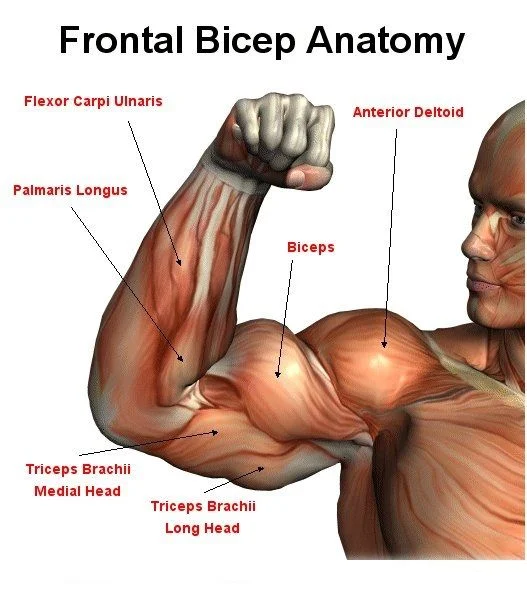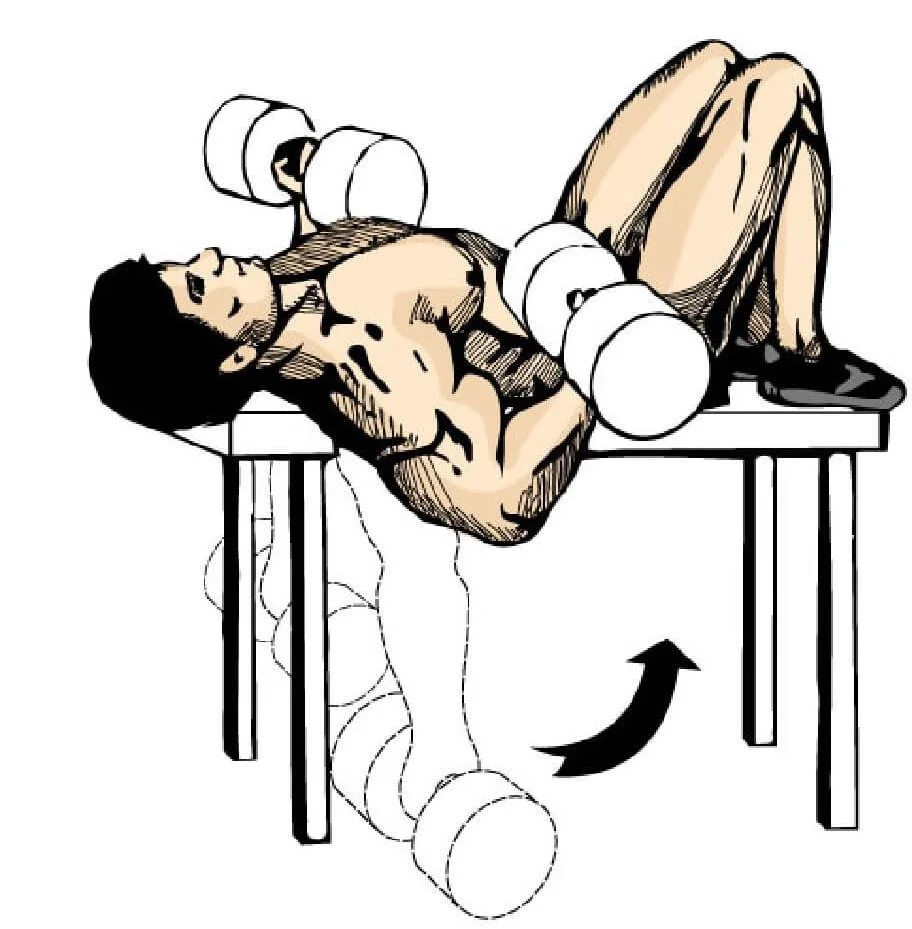Do you know the proper form for incline bicep curl? If not, it may be time to brush up on your technique. The incline bicep curl is a great example of an exercise that can be done at the gym, roadside, or even at home. It provides multiple benefits for your arms and shoulders, and understanding the proper form can make all the difference.
What Is An Incline Bicep Curl?
The incline Bicep curl is a strength-training exercise for building the bicep muscles on the front of your upper arm. What makes this curl variation unique is the body and arm position used.
Lean back on an incline bench and allow your arms to hang behind your torso to execute the workout. As you curl the weight, keep your upper arms behind your torso.
Benefits of the Incline Bicep Curl
Muscle Growth
Because the incline Bicep curl stretches the long head of the biceps, the muscle encounters more tension, which leads to increased growth.
Exercise diversity has been demonstrated to boost muscular growth. Exercise variants that bias or increase tension in different parts of the target muscle or at different joint angles should be chosen. (1)
According to research, training the biceps from different angles results in much higher improvements in biceps thickness than training without diversity, therefore inclined dumbbell curls supplement normal curl variations. (2)
Position Tolerance and Mobility
Certain body positions are harder for certain lifters to accomplish. One of these is a solid shoulder hyperextension position. Full range of motion bench pressing, barbell rows, dips, and just holding the barbell for back squats all require shoulder hyperextension and mobility. The incline Bicep curl aids in the development of a strong, basic shoulder position.
The incline Bicep curl might be an excellent corrective exercise if you fail to obtain steady, pain-free shoulder hyperextension. It raises awareness of proper shoulder blade orientation, gives support and tactile feedback from the bench, and may be readily adapted to your present abilities by adjusting the weight or bench angle.
Biceps Tendon Health and Durability
The specter of a biceps tendon tear sends chills down the spine of any serious lifter faster than a fumbled shaker bottle. Tendons connect muscle to bone and transmit tension generated by muscle contraction and stretch.
Wouldn’t it be wonderful if we could “bulletproof” our tendons against these heinous injuries? Although injuries cannot be completely avoided, research indicates that direct stress can increase tendon thickness and enhance material properties, making them tougher over time.
With relatively moderate weights (e.g., 55% of one’s one-rep max), training with a tendon extended across a joint increases tendon load and may encourage adaptation. Because the load is applied over the hyperextended shoulder, the incline dumbbell curl is an excellent exercise for targeting the tendon of the long head of the biceps brachii.
Muscles Worked by the Incline Bicep Curl

Biceps
Your biceps brachii is a very straightforward bit of muscle tissue. Located on the front surface of your upper arm, this two-headed muscle serves to bend, or flex, your elbow joint. That is its primary (and for all practical purposes, only) function. (3)
However, remember that the biceps is a biarticular muscle, meaning it crosses both the elbow and shoulder joints. As a result, altering one of those joints can automatically affect all the tension put on the tissue.
brachialis
This muscle will not be visible in a flexing position in the mirror because it is placed deep behind the biceps.
It does, however, play a significant part in developing large biceps since it pushes the muscle up from underneath. It crosses the elbow joint and serves mostly to aid in elbow flexion. Don’t skip your brachialis exercises; they’re essential for bigger, stronger arms!
Brachioradialis
This large muscle can be found on the inside of your forearm (think thumb side). During an incline dumbbell curl, this muscle is heavily stimulated. Its function in the curl is to help with elbow flexion. (4)
Don’t underestimate the importance of forearm muscles because if they are too weak to handle the weight, you won’t be able to stimulate the biceps during curls.
How to do Incline Dumbbell Curl

Instructions
- Set your bench at a 45-60 degree incline.
- Begin by getting a pair of dumbbells and sitting on the bench with your feet grounded and your back flat on the bench. We recommend keeping your back to the bench the entire time.
- Allow your arms to drop down by your sides behind your body. Your shoulders and elbows should be in a straight line. Maintain a firm grip on the bench with your shoulder blades.
- Curl both weights by flexing your elbows and keeping your upper arms upright while keeping your palms up. Grip the dumbbell tightly and keep your pinky slightly over your thumb during the curl, as if you were supinating.
- Pause for a second at the top to contract the bicep as hard as you can, then slowly begin to lower your weights, keeping your upper arm locked in the same position. Keep your pinky slightly above your thumb and allow the slow negative to stretch the bicep and shoulder without losing tension.
- Once you have reached the bottom with your arms straight, repeat.
Incline Dumbbell Curl Tips
- Allow the elbows to not move behind the body. Similarly, as you drop the weight, check sure the shoulder does not slip forward in the socket.
- Maintain a small bend in the elbow at the bottom of the exercise to retain biceps tension.
- Performing the exercise with a slow eccentric (lowering portion) can help to improve tension and mind-muscle connection.
Common mistakes to avoid
Adding incline dumbbell curls to your biceps workout will help you hit your bicep growth goals. But, to get the most out of this exercise, it’s important to follow the correct form and avoid these common mistakes.
Arching Your Back
If you try to lift your lower back off the bench, you will lose the proper position for the exercise. Consider drawing your abs into your spine and staying connected to the bench throughout the exercise. If the weight you’re using is too heavy to keep this up, reduce the load.
Going Too Heavy
Using excessively heavy weights increases the likelihood that your body may cheat the movement to compensate. It is also harmful during the lowering section of the movement and may result in a shoulder injury if the weight is too heavy for the stretching element of the movement. Remember that you won’t be able to use your standard curl weight, so start light, concentrate on control and tension, and gradually progress.
Placing Your Arms Too Far Behind You
Make sure to set the bench up to the correct angle, so your arms are not too far behind you. Set the bench between 45-60 degrees and keep your elbows in line with your shoulders. Again, the shoulders are hyperextended in this position, so having them too far back makes it a dangerous risk with no increased benefit.
Shortening The Range Of Motion
Not allowing your arms to fully straighten at the bottom will deprive your biceps of the benefits of the stretched position. Remember that the excessive stretch of the biceps and shoulders, along with the increased range of motion, causes the biceps muscle to contract with greater force than usual.
Moving Your Upper Arm
Make sure to keep your upper arm vertical and locked in position. If your arms move out of this position, your body will try to recruit your shoulders to assist in this movement, which will decrease bicep activation.
Letting Your Weights Fall To The Bottom
When beginning the descending phase of the movement, retain stress on the biceps the entire time. Consider a 4-second pace on the way down. You’re missing out on the stretch and advantages of the gradual eccentric if you feel like you’re managing the curl-up and then letting the weights fall back down.
Incline Bicep Curl Variations
Incline Hammer Curls

The incline hammer curl is a ready alternative to the incline dumbbell curl for lifters seeking greater focus on their brachialis and brachioradialis muscles.
They are sometimes combined in the same workout to enhance arm muscle mass development.
The incline hammer and incline bicep curl are completely identical in terms of mechanics and equipment, with the exception that the incline hammer curl requires keeping the dumbbells in a neutral grip, which causes somewhat less biceps recruitment while also lowering pressure on the wrist and forearms.
Prone Incline Dumbbell Curls

Prone incline dumbbell curls are exactly what they seem like traditional incline curls performed with the lifter’s chest down on the bench rather than their back.
This unusual adjustment in stance can lower the danger of poor form adherence even further and allow for a greater range of motion.
Lying Bicep Curls

Lying bicep curls are a potential alternative to traditional incline curls for lifters who want to take their torso incline to the extreme.
laying bicep curls, as the name suggests, are performed with the lifter lying face-up upon a bench, arms hanging underneath them.
This has many of the same advantages as incline dumbbell curls, but it may put the elbows at greater risk of injury.
Incline Bicep Curl alternatives
preacher curl
Although the preacher curl does not have the same position as the incline Bicep curl, it is a good alternative for isolating the biceps, particularly the long head. To complete this move, you will typically sit on a bench that is slanted inward, allowing your upper arms to rest on it.
Instead of the elbows being behind your body, you will place them in front of your body while they’re supported by a bench. Use a neutral or reverse grip to target the long head.
Drag Curls
This variation takes more control than the incline curl, making it slightly more difficult. It works well at bringing your elbows behind your body to generate a similar stimulation for the bicep peak, but it has less stretch reflex because the elbows return to your sides rather than lengthening behind you.
Perform a supinated biceps curl by pulling your elbows behind your body as if dragging weights up your shirt.
Summary
In order to achieve optimum definition in your biceps, incline Bicep curls are preferred to regular curls. Nonetheless, you should combine both exercises within your exercise routine to improve overall definition.
A trainer is the finest source of knowledge on which bicep exercises to do to achieve your fitness goals. You can also seek the advice of a healthcare practitioner or physical therapist to check that these strength-training routines are appropriate for you.
FAQs
Should incline curls be 45 or 60?
are incline bicep curls better than normal?
Is the incline dumbbell curl a mandatory movement?
what is the best incline for bicep curls?
References
1. GERACI, R. (1999). Hard Curls, Harder Biceps. Men’s Health, 14(5), 40-40.
2. Oliveira, L. F., Matta, T. T., Alves, D. S., Garcia, M. A., & Vieira, T. M. (2009). Effect of the shoulder position on the biceps brachii EMG in different dumbbell curls. Journal of sports science & medicine, 8(1), 24.
3. Miller, A. (2007). An upper extremity biomechanical model: Application to the bicep curl.
4. Borms, D., Ackerman, I., Smets, P., Van den Berge, G., & Cools, A. M. (2017). Biceps disorder rehabilitation for the athlete: a continuum of moderate-to high-load exercises. The American Journal of Sports Medicine, 45(3), 642-650.





